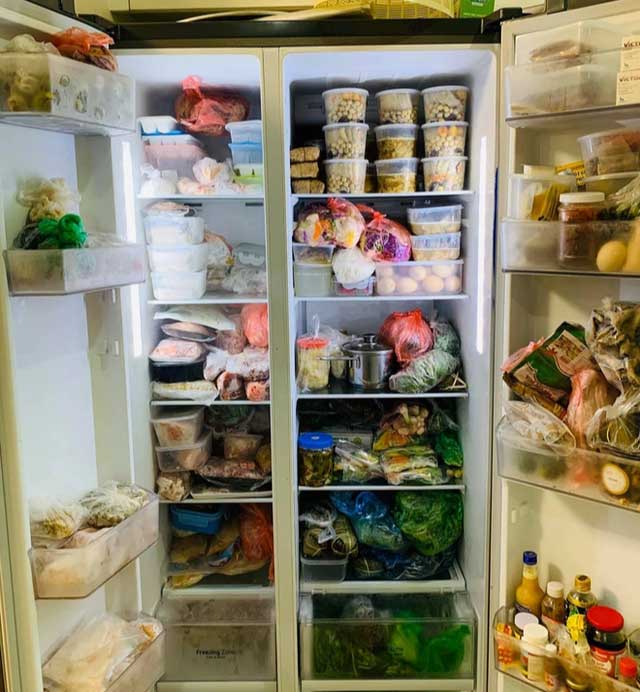The emergence and popularity of refrigerators have greatly benefited human life. However, refrigerators are not infallible and must be used correctly to maximize their effectiveness.
Common Mistakes When Using Refrigerators
Although refrigerators are common household appliances, not everyone knows how to use them properly. Here are five common mistakes that can harm your refrigerator, waste electricity, and pose health risks:
1. Setting the Temperature Too Low
Many families have a habit of setting their refrigerator to very low temperatures, believing it keeps food fresher for longer. However, this can lead to “cold burn” in foods, particularly vegetables, causing them to wilt, freeze, undergo quality changes, and lose nutrients. Additionally, it consumes more electricity and can overload the refrigerator, leading to quicker breakdowns.
2. Overloading the Refrigerator
Some households refer to their refrigerators as “treasure chests,” packed with various foods, medications, and even cosmetics. This can lead to bacterial contamination in the refrigerator. Furthermore, it makes it easy to forget about certain food items, creating both a safety hazard and unpleasant odors.

Overloading can lead to bacterial contamination in the refrigerator.
Additionally, we should not cram too much food into the refrigerator, especially in summer. Arrange items in an alternating manner and ensure there is proper airflow around the cooling system. This helps the cooling system distribute cold air evenly throughout the refrigerator, maintaining the right temperature and preserving food quality.
3. Storing Raw and Cooked Food Close Together
Surveys indicate that up to 46% of household refrigerators contain dangerous bacteria such as Escherichia coli, Salmonella, and Listeria. Notably, Listeria can thrive in low-temperature environments like refrigerators and is a common cause of food poisoning.
This bacteria is often found in raw meats such as pork, beef, and dairy products. If raw meat is stored next to cooked foods, cross-contamination with Listeria can easily occur. Consuming food contaminated with Listeria can lead to symptoms such as vomiting, diarrhea, meningitis, and even death.
Therefore, it is best to store raw meat and cooked food in separate compartments of the refrigerator. If they must be in the same compartment, wrap them tightly with plastic wrap or place them in covered containers. After removing food from the refrigerator, do not eat it immediately; reheat or cook it thoroughly. Always wash fruits and vegetables with water before consumption.
4. Placing Hot Food Directly into the Refrigerator
Many people have the habit of quickly cooling food by placing it directly in the refrigerator. This can raise the temperature inside the fridge, causing it to work harder and consume more electricity than usual.
Moreover, placing hot food in the refrigerator can cause a sudden temperature increase. This not only creates conditions for harmful bacteria to thrive but also causes other foods to spoil quickly and lose nutrients due to insufficient cooling.
5. Incorrectly Organizing Food Items

Families often store eggs and milk in the door, where temperatures are higher and spoilage is more likely.
One common mistake in organizing food in refrigerators is placing eggs and milk in the door. While eggs and milk are perishable, the door section has higher temperatures and is more affected by opening and closing, leading to inadequate cooling.
The second common mistake is storing raw meat and poultry on the top shelf. The correct method is to place foods that require lower cooking temperatures on the top shelf and those requiring higher cooking temperatures, especially poultry, on the bottom shelf.
If raw meat or poultry leaks, it can contaminate foods that may not be cooked to a high enough temperature to kill bacteria. For example, the safe minimum cooking temperature for poultry is 165°F (74°C), according to the U.S. Department of Agriculture (USDA), while seafood can be safely cooked at 145°F (62°C). Therefore, when organizing items in the freezer, place meat or poultry on the bottom shelf and seafood on the upper shelf.
Another mistake in organizing food in the refrigerator is improperly storing vegetables. Most refrigerators have a designated drawer for vegetables, but not everyone uses it correctly. Additionally, vegetables should be tightly wrapped in plastic wrap before being placed in the refrigerator to maintain freshness for a longer time.





















































